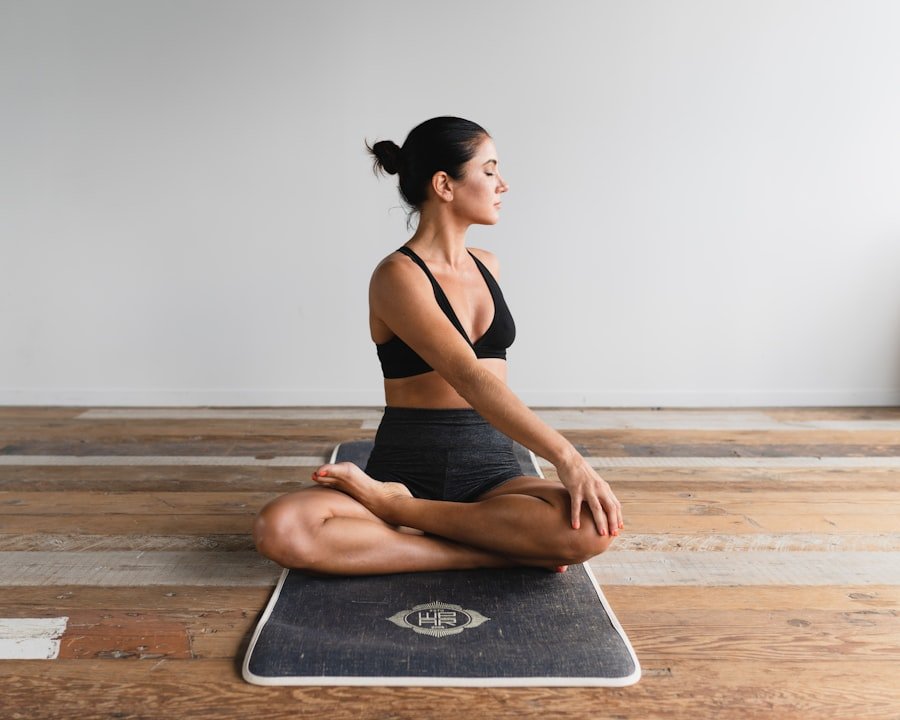Home personal training offers a multitude of advantages that cater to the unique needs of individuals seeking fitness solutions. One of the most significant benefits is the convenience it provides. By eliminating the need to travel to a gym, clients can save valuable time that can be redirected toward other priorities, such as work or family commitments.
This convenience is particularly appealing to busy professionals who often struggle to find time for exercise amidst their hectic schedules. With a personal trainer coming directly to their home, clients can seamlessly integrate workouts into their daily routines, making it easier to stay consistent and committed to their fitness goals. Moreover, home personal training allows for a more personalized experience.
Trainers can tailor workouts to fit the specific environment and equipment available in a client’s home, ensuring that each session is optimized for individual needs. This customization extends beyond just physical exercises; trainers can also incorporate elements of nutrition and lifestyle coaching, providing a holistic approach to health and wellness. The intimate setting of one’s home can foster a sense of comfort and security, enabling clients to focus on their workouts without the distractions or intimidation that sometimes accompany traditional gym environments.
Key Takeaways
- Home personal training offers convenience and flexibility
- Schedule personal training sessions during lunch breaks or early mornings
- Look for a personal trainer who specializes in your specific fitness goals
- Create a dedicated space for your home gym with essential equipment
- High-intensity interval training (HIIT) can maximize results in limited time
- Prioritize and plan your schedule to balance work, family, and personal training
- Overcome barriers such as lack of motivation or time constraints
- Utilize hotel gyms or outdoor spaces for workouts while traveling
- Virtual personal training allows for workouts from anywhere with an internet connection
- Set achievable fitness goals that align with your busy lifestyle
- Make personal training a long-term commitment for overall health and wellness
How to Fit Personal Training into a Busy Schedule
Integrating personal training into a busy schedule requires strategic planning and prioritization. One effective approach is to identify specific time slots during the week that can be dedicated to workouts. This might involve early morning sessions before the day begins or evening workouts after work hours.
By treating these appointments as non-negotiable commitments, individuals can create a routine that accommodates their fitness goals while still allowing for professional and personal responsibilities. Utilizing tools such as calendars or scheduling apps can help in visualizing these time blocks, making it easier to adhere to the planned workout sessions. Another strategy is to maximize the efficiency of each training session.
Busy professionals may benefit from high-intensity interval training (HIIT) or circuit training, which can deliver significant results in shorter periods. These types of workouts are designed to elevate heart rates and build strength quickly, making them ideal for those with limited time. Additionally, discussing specific goals with a personal trainer can lead to the development of focused workout plans that prioritize essential exercises, ensuring that every minute spent training is productive and aligned with the client’s objectives.
Finding the Right Personal Trainer for Your Needs

Selecting the right personal trainer is crucial for achieving fitness goals effectively and sustainably. It begins with assessing one’s own needs and preferences. For instance, individuals should consider their fitness level, specific goals (such as weight loss, muscle gain, or improved athletic performance), and any particular areas of focus they wish to address, such as flexibility or endurance.
Once these factors are established, potential trainers can be evaluated based on their qualifications, experience, and areas of expertise. A trainer who specializes in a particular discipline may be more suited for clients with specific aspirations. Moreover, compatibility between the trainer and client is essential for fostering a positive working relationship.
This includes communication styles, motivational techniques, and personality traits. A trial session can be an effective way to gauge this compatibility; it allows clients to experience the trainer’s approach firsthand and determine if it aligns with their expectations. Additionally, seeking recommendations from friends or colleagues who have had positive experiences with personal trainers can provide valuable insights and help narrow down options.
Creating a Home Gym for Personal Training
| Equipment | Quantity | Cost |
|---|---|---|
| Dumbbells | 2 sets (5-20 lbs) | 50-100 |
| Kettlebells | 2 (15-25 lbs) | 40-60 |
| Resistance Bands | 1 set | 15-30 |
| Yoga Mat | 1 | 20-40 |
| Jump Rope | 1 | 10-20 |
Establishing a home gym can significantly enhance the effectiveness of personal training sessions by providing a dedicated space for workouts. The first step in creating this environment is assessing available space within the home. Whether it’s a spare room, garage, or even a corner of the living room, identifying an area that can be designated for exercise is crucial.
Once the space is determined, individuals can begin selecting equipment that aligns with their fitness goals and available budget. Essential items might include dumbbells, resistance bands, yoga mats, and stability balls, which offer versatility for various workouts. In addition to physical equipment, creating an inviting atmosphere can further motivate individuals to engage in regular training sessions.
This might involve adding mirrors to monitor form, ensuring proper lighting for visibility, or incorporating motivational decor such as quotes or images that inspire action. Furthermore, maintaining an organized space free from clutter can enhance focus during workouts. By investing time and resources into creating a functional home gym, individuals set themselves up for success in their personal training journey.
Maximizing Results with Limited Time
For those with tight schedules, maximizing results within limited time frames is essential. One effective method is to focus on compound exercises that engage multiple muscle groups simultaneously. Movements such as squats, deadlifts, and bench presses not only save time but also promote greater overall strength and muscle development compared to isolation exercises.
Incorporating these compound movements into a workout routine allows individuals to achieve more in less time while also enhancing functional fitness. Additionally, incorporating technology can aid in maximizing workout efficiency. Fitness apps and wearable devices can track progress, monitor heart rates, and provide workout suggestions tailored to individual goals.
These tools enable users to stay accountable and motivated while ensuring that each session is aligned with their fitness objectives. By leveraging both strategic exercise selection and technology, busy individuals can achieve significant results even within constrained time limits.
Balancing Work, Family, and Personal Training

Striking a balance between work commitments, family responsibilities, and personal training can be challenging but is achievable with thoughtful planning. One effective approach is to involve family members in fitness activities. This could mean scheduling family walks or bike rides on weekends or engaging in group workouts at home.
By making fitness a family affair, individuals not only foster healthier habits but also create quality bonding time with loved ones. Setting boundaries around work hours is another critical aspect of maintaining this balance. Establishing clear start and end times for work can help prevent professional obligations from encroaching on personal time dedicated to fitness and family activities.
Communicating these boundaries with colleagues and supervisors fosters an understanding of one’s commitment to health and wellness. By prioritizing personal training as an essential component of life rather than an optional activity, individuals can create a sustainable balance that supports both their physical health and familial relationships.
Overcoming Common Barriers to Personal Training
Many individuals encounter barriers that hinder their ability to engage in personal training consistently. One common obstacle is the perception of lack of time; however, reframing this mindset can be beneficial. Instead of viewing exercise as an additional task on an already full schedule, individuals can consider it an investment in their overall well-being that ultimately enhances productivity in other areas of life.
Recognizing the long-term benefits of regular physical activity can motivate individuals to prioritize training sessions despite busy schedules. Another barrier often faced is intimidation or self-doubt regarding fitness abilities. Many people feel overwhelmed by the prospect of starting a new workout regimen or fear judgment from others in a gym setting.
Home personal training effectively mitigates this concern by providing a private environment where individuals can learn at their own pace without external pressures. Trainers are equipped to offer encouragement and support tailored to each client’s unique journey, helping them build confidence over time.
Incorporating Personal Training into Travel Schedules
Traveling for work or leisure often disrupts regular fitness routines; however, incorporating personal training into travel schedules is entirely feasible with some planning. One effective strategy is to communicate with trainers about upcoming trips so they can provide tailored workout plans that require minimal equipment or utilize bodyweight exercises suitable for hotel rooms or outdoor spaces. This proactive approach ensures that individuals remain accountable even when away from their usual training environment.
Additionally, many hotels now offer fitness facilities or partnerships with local gyms that allow guests access during their stay. Researching these options ahead of time can facilitate seamless integration of workouts into travel itineraries. Furthermore, utilizing virtual personal training sessions while traveling offers flexibility; clients can connect with their trainers via video calls for guided workouts regardless of location.
The Convenience of Virtual Personal Training
Virtual personal training has gained popularity as an accessible alternative to traditional in-person sessions, particularly in today’s fast-paced world where convenience is paramount. This format allows clients to engage in personalized workouts from the comfort of their homes or any location with internet access. The flexibility offered by virtual training means that clients can schedule sessions at times that best suit their lifestyles without being constrained by geographical limitations.
Moreover, virtual personal training often incorporates various digital tools that enhance the experience. Trainers may utilize video demonstrations, real-time feedback through video calls, and progress tracking via apps or online platforms. This technology not only facilitates effective communication but also allows trainers to adjust workouts dynamically based on client performance during sessions.
As a result, virtual personal training provides an innovative solution for those seeking personalized guidance while navigating busy lives.
Setting Realistic Goals for Busy Professionals
For busy professionals embarking on a personal training journey, setting realistic goals is crucial for maintaining motivation and achieving success over time. It’s essential to establish specific, measurable objectives rather than vague aspirations like “getting fit.” For instance, aiming to complete three workouts per week or increasing strength in specific exercises by a certain percentage within a set timeframe provides clear targets that are easier to track. Additionally, breaking larger goals into smaller milestones can help maintain momentum and foster a sense of accomplishment along the way.
Celebrating these achievements—whether it’s completing a challenging workout or reaching a weight loss target—reinforces positive behavior and encourages continued commitment to fitness endeavors. By setting achievable goals tailored to individual circumstances, busy professionals can cultivate a sustainable approach to personal training that aligns with their lifestyles.
Making Personal Training a Sustainable Lifestyle Choice
Transforming personal training from a temporary endeavor into a sustainable lifestyle choice requires cultivating healthy habits that integrate seamlessly into daily routines. One effective method is to establish consistency through regular scheduling; treating workouts as essential appointments fosters accountability and commitment over time. Additionally, incorporating variety into workout routines helps prevent boredom and keeps motivation high; exploring different types of exercises—such as yoga, strength training, or outdoor activities—can enhance enjoyment while promoting overall fitness.
Furthermore, fostering a supportive community can significantly impact long-term adherence to personal training goals. Engaging with friends or family members who share similar fitness aspirations creates an environment of encouragement and accountability. Joining group classes or online fitness communities also provides opportunities for social interaction while pursuing health objectives together.
By embedding personal training into the fabric of daily life through consistency, variety, and community support, individuals can create lasting lifestyle changes that prioritize health and well-being amidst busy schedules.

